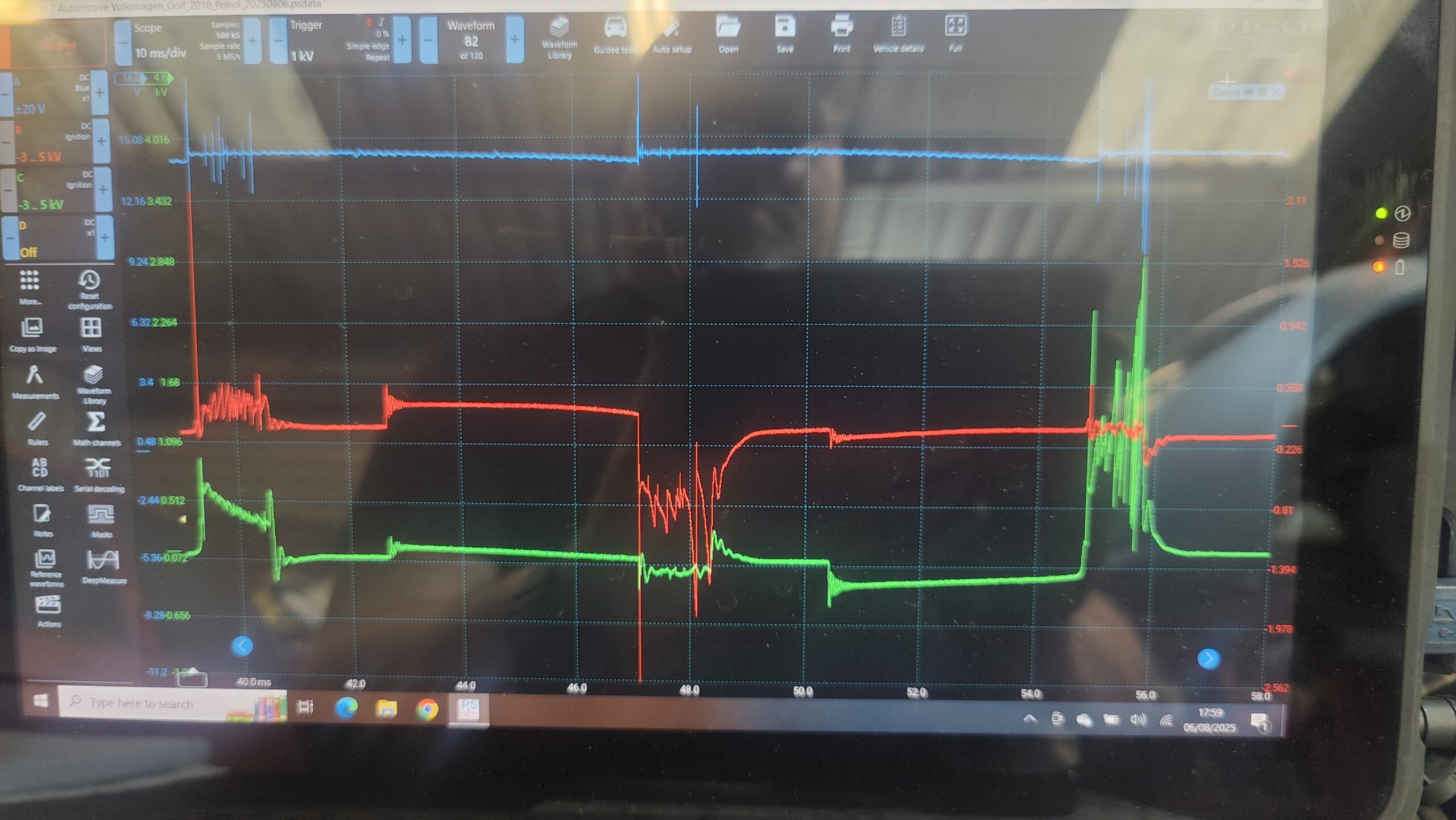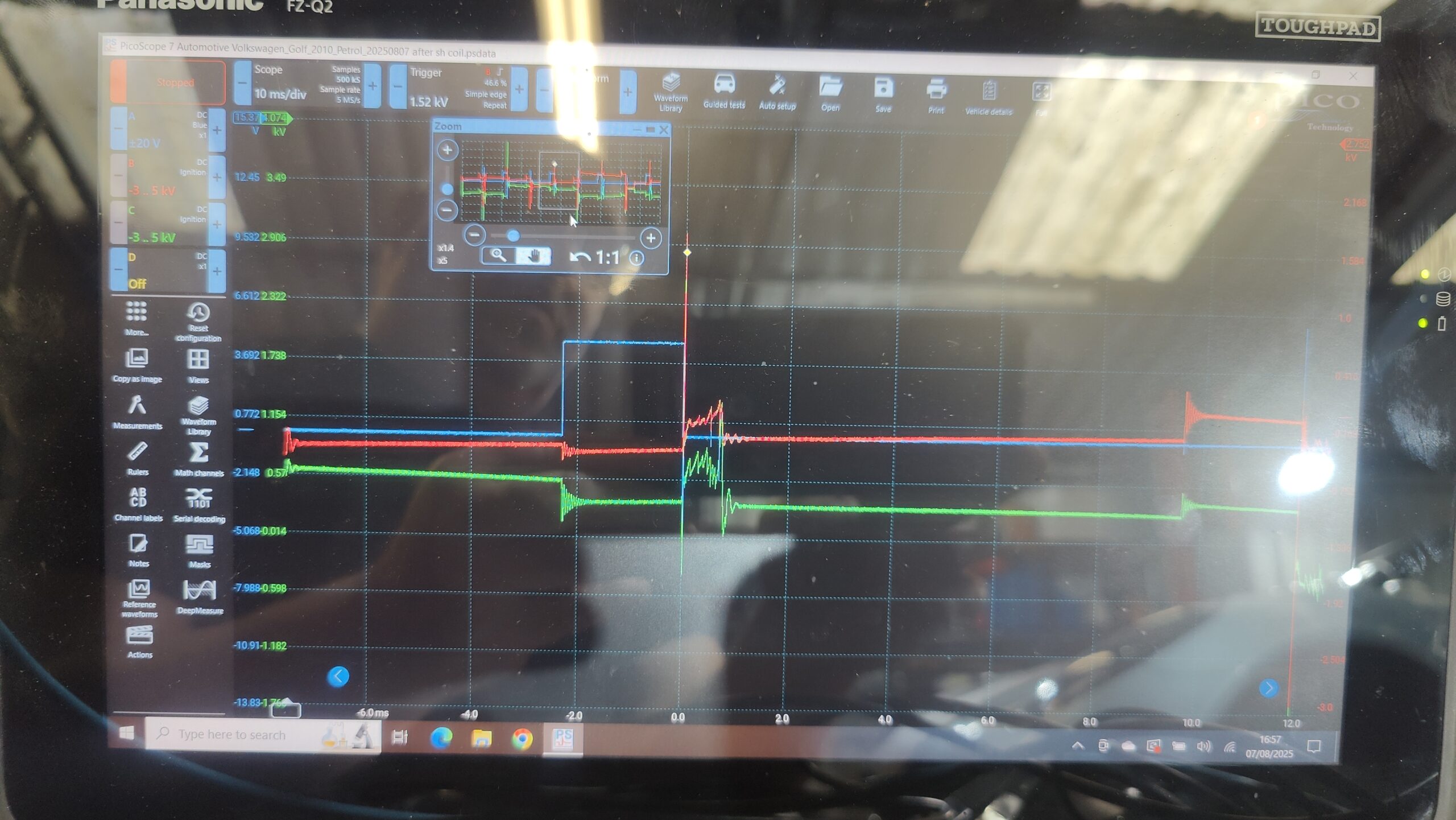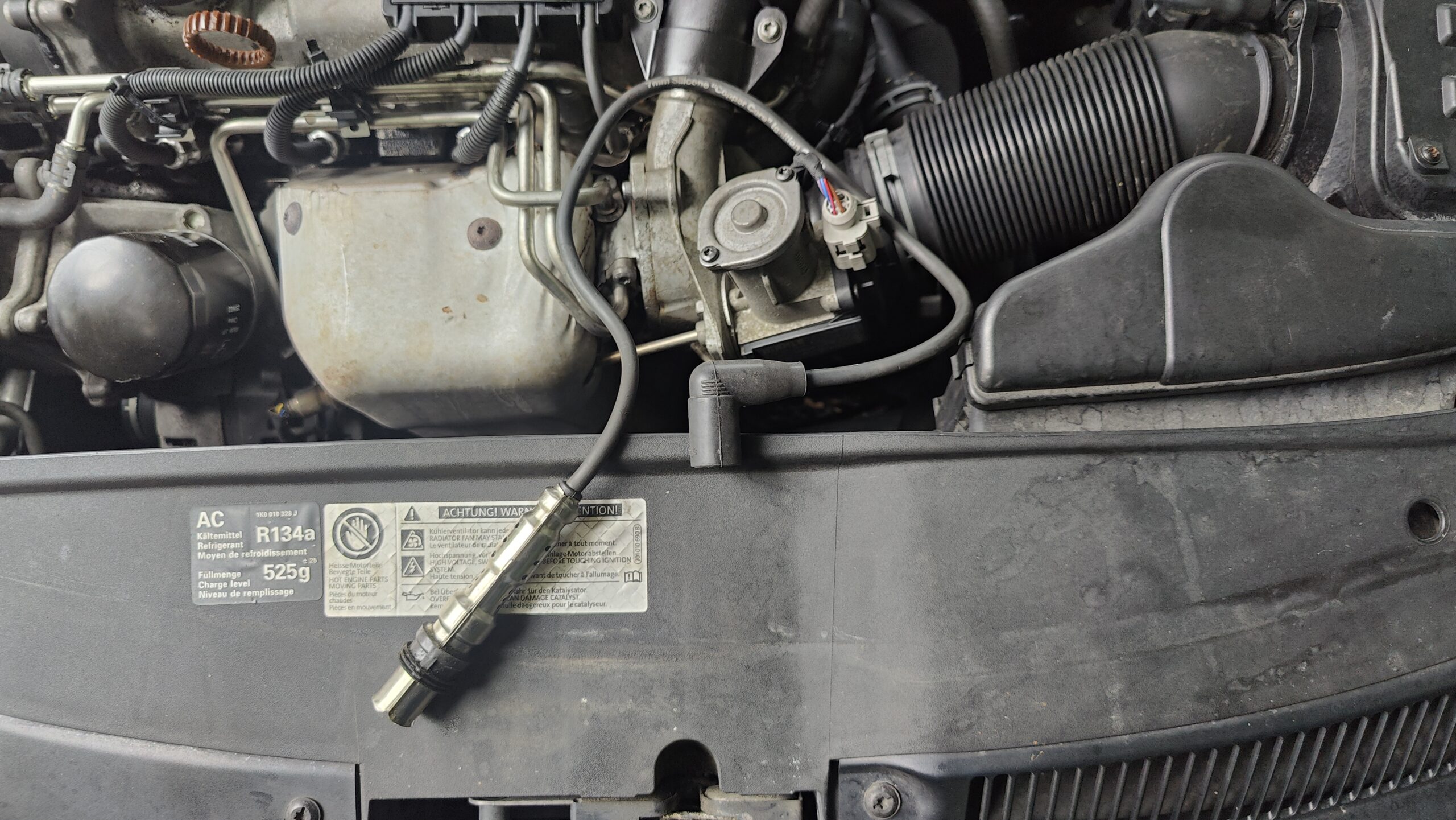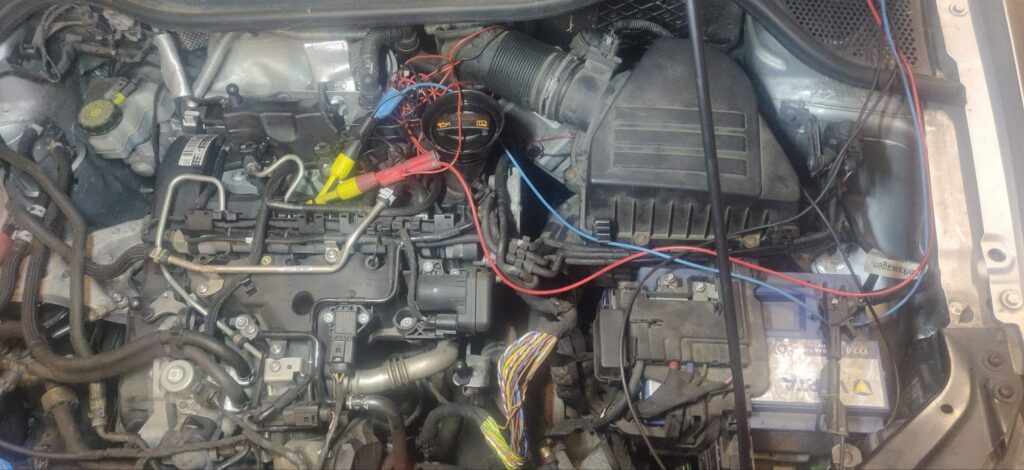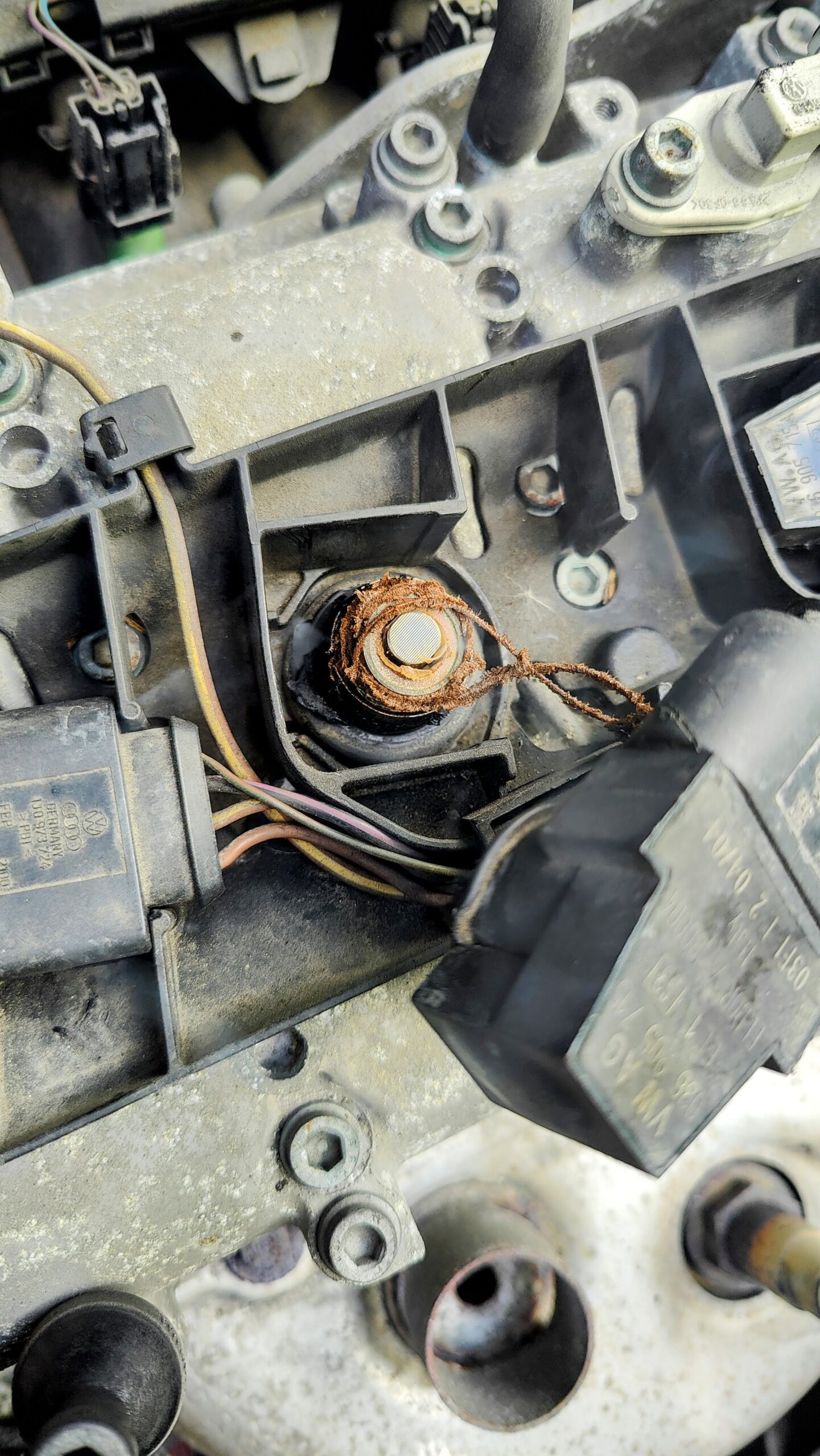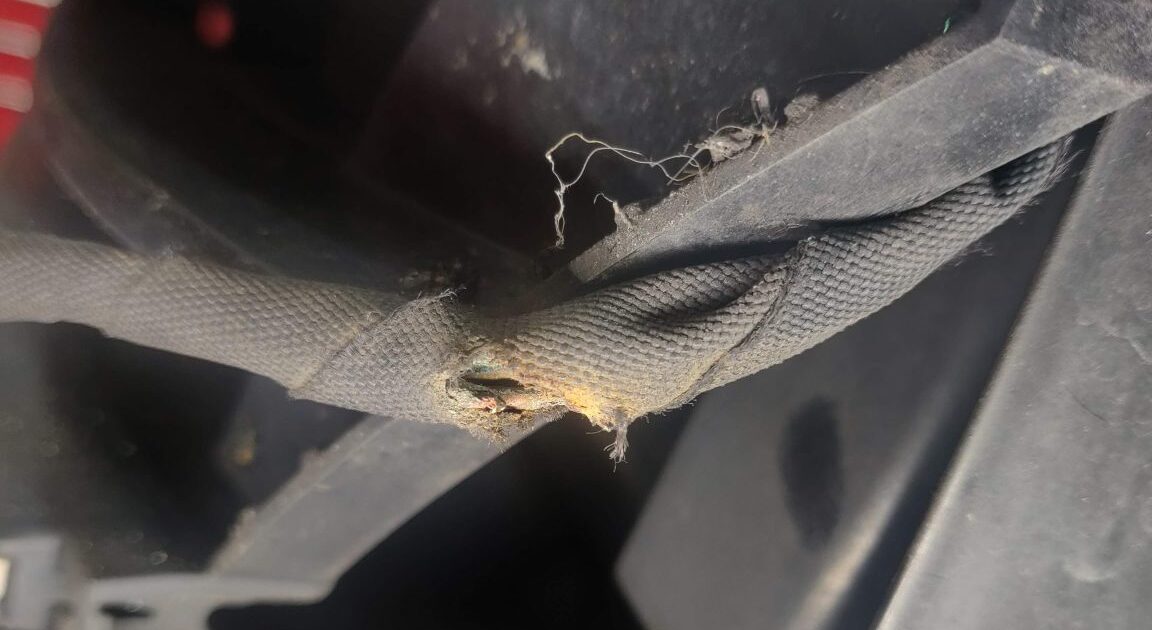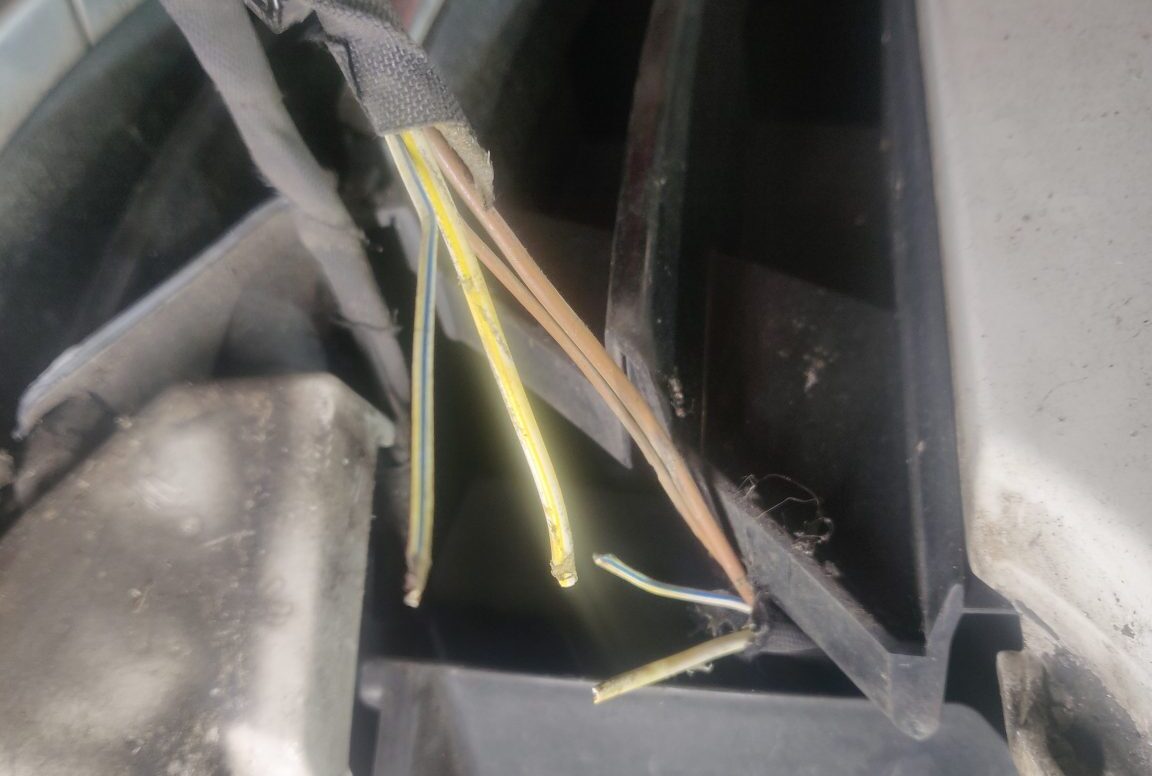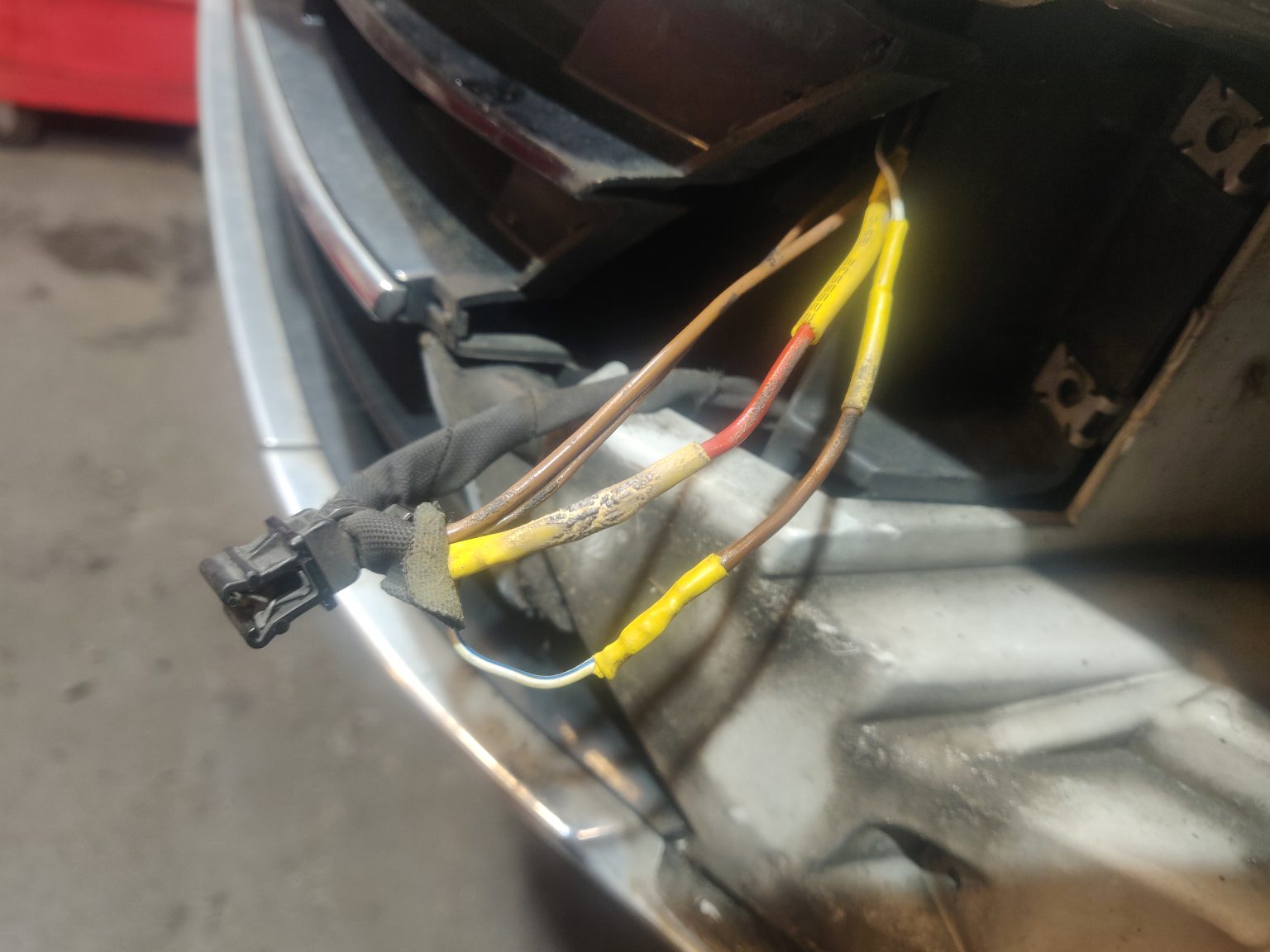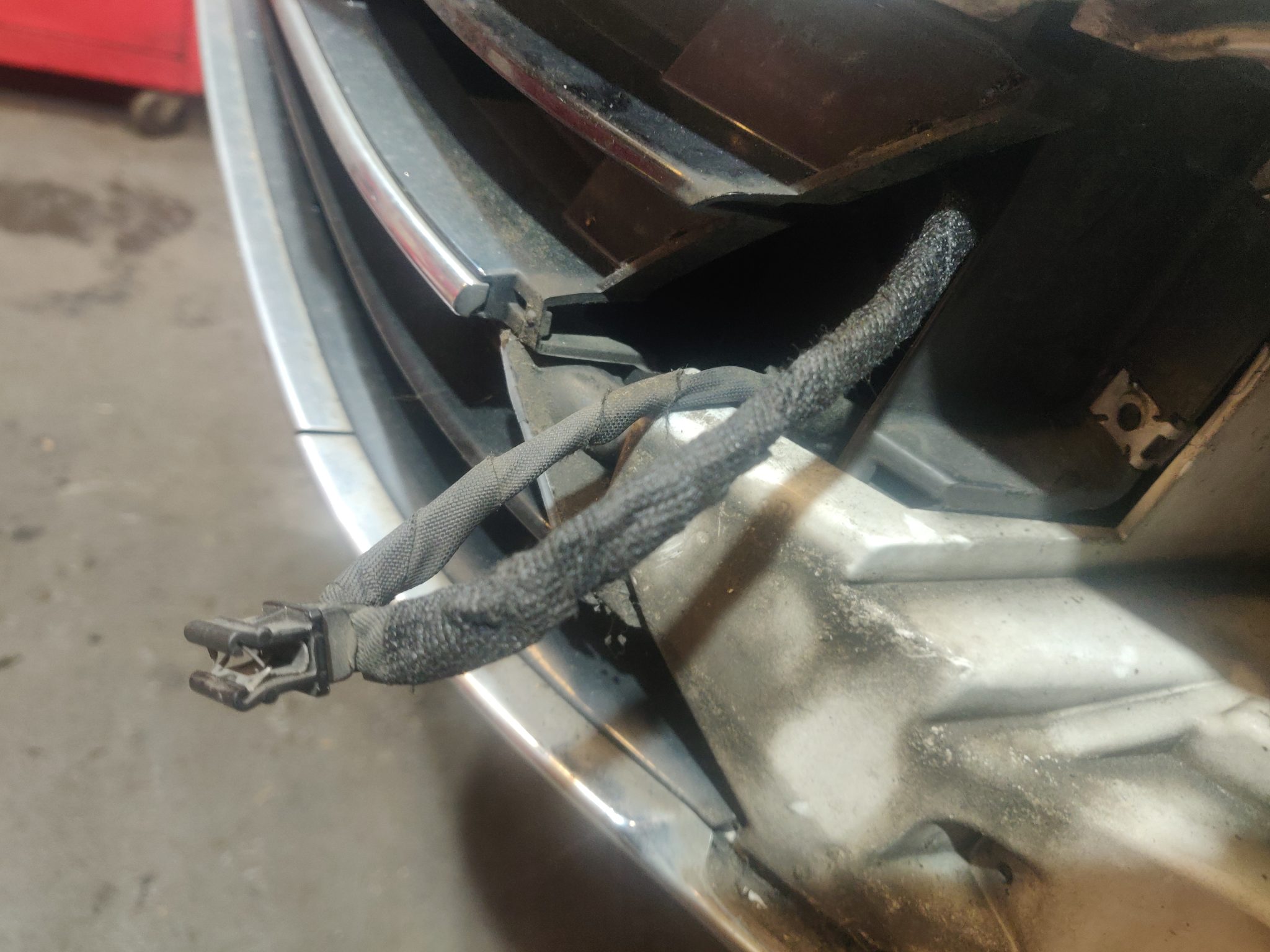Volkswagen Golf with a weird misfire complaint
What’s the problem?
This VW Golf 1.2 TSI is experiencing a definite misfire under load. The customer reports that the ignition coil and spark plug leads have recently been replaced. Curiously, the misfire seemed to decrease after the number four spark plug lead was swapped back to one of the original components. This raises a few questions: Are we dealing with a faulty new part, or was the original issue misdiagnosed?
No trouble codes were found during the initial scan.
I have road-tested the vehicle and confirmed the presence of a misfire under load. So I know there is a problem even though there’s no codes present. My next step was a relative compression test, which showed no abnormalities. While this initial test provides a good starting point, I recognize that I may need to perform a more thorough compression analysis if other diagnostic tests are inconclusive.
For now, I will proceed with other tests while monitoring live data to gather more information.
Driving with live data gives me some direction
My initial test involved setting the scan tool to monitor misfire counters. I don’t always rely on these counters due to potential inaccuracies, but they can be useful for pointing you in the right direction.
Straight away I observed a very high misfire count on cylinder 1 while feeling the misfire under load. My initial thought was a faulty spark plug lead, which made me reconsider the customer’s report about swapping the number four lead. Could this be a case of a defective set of new leads?
I pulled over, cycled the ignition, and resumed the test drive. This time, the misfire was consistently on cylinder 4, with all other cylinders operating correctly. After pulling over and cycling the ignition a second time, the misfire was predominantly on cylinder 3, though it was also present to a lesser extent on cylinder 1.
This pattern of random misfires is beginning to strongly suggest a failing ignition coil pack. Although the part has been replaced, along with the spark plug leads, the new components are now under suspicion.
Some more testing
Back in the workshop I connected the oscilloscope to 2 plug leads to watch what was happening in real time. I noticed at idle the traces looked text book perfect but under snap throttle I could hear the engine tone change and the hash on my burn line above proved I had an ignition breakdown. Again I could see this jumping from one cylinder to another and cementing the belief that the coil pack was at fault. this is a fairly common problem on these CBZ engines and I have replaced quite a few of them. I only stumbled on this one because the coil had been changed but when I took the coil pack off I couldn’t see a makers mark on it so who knows where it came from.
The image above is after the coil was replaced. a much clearer view and the engine sounded so much smoother too. Convinced I had gotten to the end of this job I went for my final test drive. All was good until I pulled out on to the main road and under load I could feel a misfire, not as harsh as before but not right. (The blue trace shows my coil-on time. In the before image this was not connected correctly. It doesn’t form part of my diagnosis.)
The scan tool was still connected and I could see misfires counting up on cylinder 4. I cycled the ignition a couple of times and it stayed on cylinder 4 – then I remembered the customer had changed that plug lead to one of the originals in an attempt to fix the issue themselves – I replaced this lead with the new one that was removed and my misfire was gone on the final test drive.
Conclusion
Although this diagnosis ultimately pointed to a straightforward issue, it would have been wrong of me to guess and just buy a coil pack, especially since the customer had already done so just a few months prior. Also with the plug leads being partially at fault it would have been a heart stopping moment when I fitted the coil and still had a misfire.
This job reinforces the value of a structured diagnostic process. A methodical approach keeps you from falling into common rabbit holes and ultimately saves both time and extra costs for parts that would not be required.

